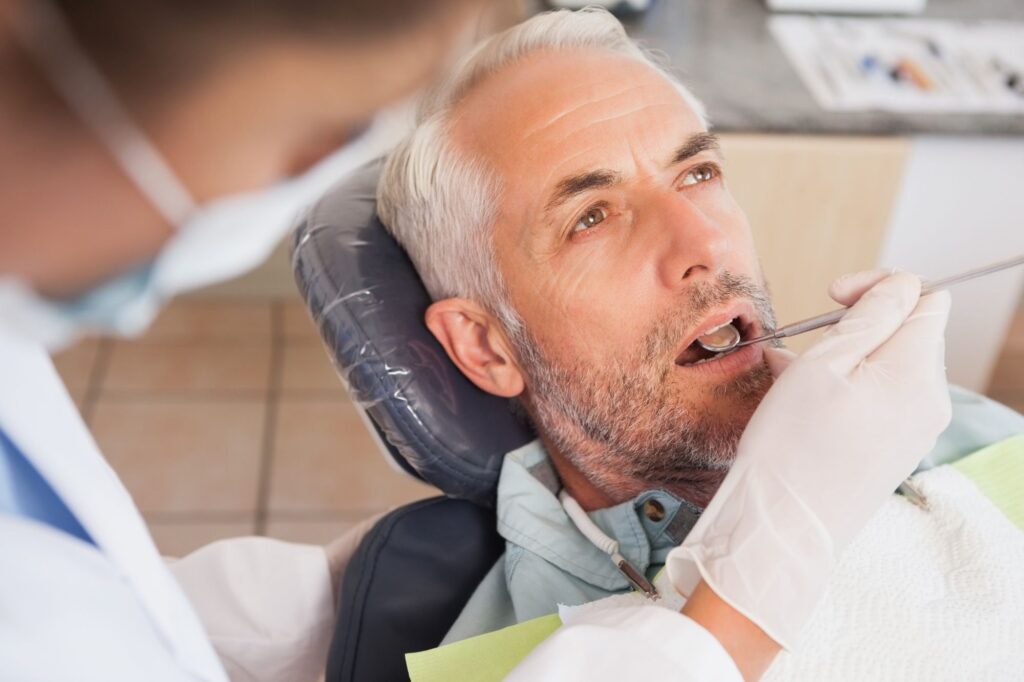Oral Cancer: The Silent Killer You Need to Know About
Oral cancer may not be the most glamorous topic to discuss, but it’s important to shed some light on this silent killer. After all, your mouth is the gateway to your body, and if there’s one thing we know about cancer, it’s that early detection is key. This sneaky little disease is no joke. It’s the silent killer that you need to know about before it’s too late. While everyone knows about breast cancer and prostate cancer, oral cancer often gets overlooked. But don’t let its low profile fool you – this type of cancer can be just as deadly as any other. In fact, according to recent statistics, nearly 10% of all cancers are found in the mouth or throat. So why aren’t we talking more about it?

Oral cancer and its prevalence
Oral cancer is a highly prevalent form of cancer that affects millions of people worldwide. According to the American Cancer Society, around 53,000 Americans were diagnosed with oral cavity or oropharyngeal cancer in 2021. The disease can affect any part of the mouth, including the tongue, tonsils, gums, and lips.
One of the reasons why oral cancer is so dangerous is that it often goes undetected until it has reached an advanced stage. This is because symptoms such as soreness or swelling in the mouth are often mistaken for less serious conditions like gum disease gum disease. As a result, many cases are not diagnosed until they have spread to other parts of the body.
There are several risk factors associated with oral cancer. These include smoking and using tobacco products, excessive alcohol consumption, exposure to HPV (human papillomavirus), and a family history of cancer. It’s important for individuals who are at increased risk to undergo regular screening tests and checkups to detect any signs of oral cancer early on.
Risk Factors: Tobacco and alcohol usage
Tobacco and alcohol usage are two major risk factors for developing oral cancer. According to the American Cancer Society, tobacco use is responsible for at least 30% of all cancer deaths in the United States, including oral cancer. Smoking cigarettes, cigars, pipes or using smokeless tobacco products such as chewing tobacco or snuff can increase the risk of developing oral cancer by up to six times compared to non-smokers.
Alcohol consumption also plays a significant role in increasing the risk of developing oral cancer. Heavy drinkers who consume more than three alcoholic drinks per day have been found to be at higher risk than those who drink less. The risk increases further when combined with smoking or other forms of tobacco use.
It’s important to note that quitting smoking and reducing alcohol consumption can greatly reduce your chances of developing oral cancer and other related health issues. It’s never too late to quit smoking or cut back on alcohol consumption; talk to your doctor about resources available to help you make positive changes in your lifestyle.
Oral Cancer Symptoms: Lesions, difficulty swallowing
Lesions and difficulty swallowing are two common symptoms of oral cancer that should not be ignored. Lesions may appear as white or red patches in the mouth, sores that don’t heal, or lumps on the lips, tongue, or throat. These lesions can be painful and may bleed easily if they are bumped or touched. Difficulty swallowing is another symptom of oral cancer that can occur when a tumor grows in the throat or esophagus. This can make it hard to eat, drink, or speak properly.
Although these symptoms may be caused by other conditions, it’s important to see a doctor if you experience any of them for an extended period of time. Early detection is key in treating oral cancer successfully and improving your chances of survival. If you have any concerns about your oral health, talk to your dentist or primary care physician right away. They can perform an exam and recommend further testing if needed.
In addition to these physical symptoms, some people with oral cancer may experience unexplained weight loss, fatigue, or changes in their voice. These symptoms can often be mistaken for other health issues but should still be taken seriously and addressed by a medical professional as soon as possible. By being aware of the signs and symptoms of oral cancer and seeking prompt treatment when necessary, you can protect yourself from this silent killer.
Diagnosis of Oral Cancer: Biopsy and imaging tests
When it comes to diagnosing oral cancer, two types of tests are commonly used: biopsy and imaging tests. A biopsy involves taking a sample of tissue from the affected area and examining it under a microscope for signs of cancerous cells. This is typically done after a suspicious lesion has been found during an oral examination or screening.
Imaging tests, on the other hand, use advanced technology to create detailed images of the inside of the mouth and throat. These tests can help determine the size and location of any tumors or abnormal growths, as well as whether they have spread to nearby lymph nodes or other areas of the body. Both types of tests are essential in diagnosing oral cancer early on when it’s most treatable.
Treatment: Surgery, radiation therapy
Surgery is a common treatment option for oral cancer. Depending on the stage and location of the cancer, surgery may involve removing part or all of the affected tissue, lymph nodes, and/or surrounding structures. In some cases, reconstructive surgery may be necessary to restore function and appearance. Recovery time varies depending on the extent of surgery but typically involves pain management and rehabilitation.
Radiation therapy uses high-energy particles or waves to destroy cancer cells. It is often used in combination with surgery or as a primary treatment for smaller tumors. Side effects can include fatigue, skin irritation, and difficulty swallowing but can usually be managed with medication and supportive care. Radiation therapy may also cause long-term complications such as dental problems or an increased risk of developing a second type of cancer later in life.
Prevention of Oral Cancer: Regular dental check-ups & healthy lifestyle choices
Regular dental check-ups and healthy lifestyle choices play a vital role in the prevention of oral cancer. During routine dental visits, your dentist will examine your mouth for any signs of abnormal cells or suspicious growth. Early detection is crucial when it comes to treating oral cancer, as symptoms may not be present until the disease has progressed.
In addition to regular dental check-ups, making healthy lifestyle choices can also reduce your risk of developing oral cancer. Avoiding tobacco products – including cigarettes, cigars, and chewing tobacco – is one of the most important steps you can take. Alcohol consumption should also be limited, as heavy drinking can increase your risk of developing oral cancer.
Maintaining good overall health by eating a balanced diet rich in fruits and vegetables and exercising regularly can also help prevent oral cancer. It’s important to remember that while prevention is key, it’s never too late to make positive changes in your life – even if you have been diagnosed with oral cancer. Your dentist and healthcare team are there to support you every step of the way.
Final Thoughts on Oral Cancer
In conclusion, oral cancer is a serious and often silent disease that can have devastating consequences if not caught early. It is crucial for individuals to regularly check their mouths for any unusual changes or symptoms and to seek medical attention if anything seems amiss. Additionally, lifestyle choices such as avoiding tobacco and excessive alcohol consumption can greatly reduce the risk of developing oral cancer.
It is important to remember that early detection is key. Regular dental check-ups and screenings can help catch any abnormalities before they become more advanced. As with many diseases, awareness, and education are essential in preventing its spread and ensuring prompt treatment when necessary.
Overall, it is imperative for individuals to take proactive measures in maintaining their oral health and being mindful of any changes or symptoms that may indicate the presence of oral cancer. By doing so, we can work towards reducing the incidence of this deadly disease and improving outcomes for those affected by it.







2 Comments
Pingback:
Pingback: